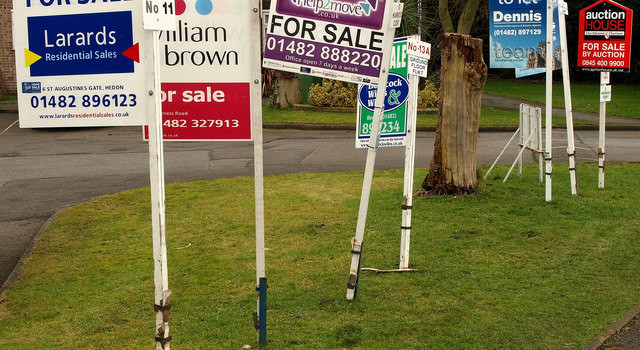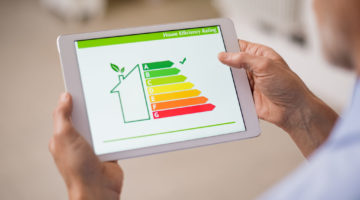
One rebuttal we hear so often from customers is that they are planning to move home at some point in the future, and so they don’t need to install energy saving measures – it would just be a waste of money. We really want to refute this, and show you just why it is worth making your home more efficient. We look at the returns you can expect and what the best measures are if you are selling your home.
The Basics
Why do people care about efficiency when they are buying a home? Because it means their bills will be much lower for the whole duration of their stay. A few simple improvements can save hundreds of pounds on bills, and stacked up over the years that someone will live there – it’s going to be worth its weight in gold – especially considering the huge increases in fuel bills.

Further, increasing a D rated home up to a B will increase value by another £16,000. Depending on the home, this will be more tricky to achieve under budget, but installation of solar PV and wall insulation could well move you up to a B – something very much achievable for under £16,000.
Regional differences in value
There is a very regional picture associated with the value of energy efficiency improvements. For some areas of the country you will make very large gains, and for others, it is more modest. The table below (taken from the government report last June), shows some of these differences, so you can get an idea of just how valuable it is for your region. London is perhaps the most unusual, in that huge increases in value are seen when upgrading from a G to E, but only very minor changes when moving from a D to B.
1 = Result is not statistically significant at the regional level; all other results are significant to between 95% and 99.9% confidence levels (see the DECC report for a breakdown of these results).
* = Reported prices calculated using average sale prices in each region, then applying the report’s price premiums compared to EPC Band G properties.
How do I get from a G to an E rating?
As we have said, it is usually really easy to get from a G to an E rating – the exception might be a listed property, but the vast majority should be able to get that E rating really easily. The cheapest gains, such as draught proofing, LED lighting, and loft insulation, should get you up to an E. If not, you might need to consider a more efficient heating system – a £5,000 central heating system will get the property up to an E at least.
Getting from a D rating to a B
The majority of properties in the UK fall in to the D category. Any property built in the latter half of the 20th century will have cavity walls, moving it above the lowly G rating, but getting above a D is actually a lot harder. All the easy wins are done, and you are left with some fairly expensive options. There is no reason why you can’t profit from making you’re a home B rated however. In the following example we improve a D65 rated home to a B81:
Solid wall insulation – £6,000 (after grant)
Solar PV (3kW system) – £6,000
Floor Insulation – £3,000
These improvements would fall under a £16,000 budget, and would turn you a profit in many parts of the country. But remember, solar panels will provide the feed in tariff for 20 years, so the new owner would benefit from several thousand pounds in FIT payments in the coming years – which is certain to make the house more saleable!
Should I replace windows?
If you’ve read some of our other blogs, you will know by now that windows never pay for themselves in terms of energy efficiency. Double or triple glazing might save you £50-100 a year, whilst the install costs are likely to hit £10,000, so it isn’t worth it on efficiency grounds alone. When it comes to selling your home however, double glazing is very desirable, and can add considerable value to a home. It depends on the property however, and if you have period or sash windows, you may actually lose value by replacing them if you opted for uPVC over wooden replacements!
Buying greener homes
If you in the market for a new home, and energy efficiency is important to you, there are a few tips to help. Look at the EPC for properties you are interested in viewing – they should have their EPC on the epc register and many estate agents now post them online in their ad (even stating the rating).
To emphasise just how much stock home buyers are considering energy efficiency these days, there are actually websites dedicated to finding efficient houses, like Greenmoves for example.
Of course, the best way to snap up a bargain, as we have seen from the figures above, is to buy a G rated home and improve it yourself – if you buy carefully you could save yourself a bucket load of money!
Think we missed something? Do you have a different opinion?
Comment below to get your voice heard…













Buyers aren’t stupid- even if on paper the value hasn’t increased, they will look on any improvements as a positive. Especially with fuel prices rising so unpredictably. It is always going to look favourable and put you as the seller in a stronger position!